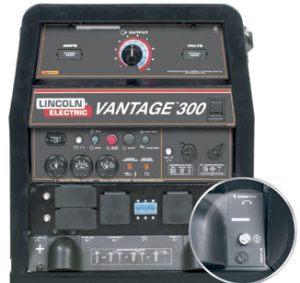 Break new ground on arc welding grounding safety basics
Break new ground on arc welding grounding safety basics
September 2, 2014 REDWIRE is news you can use from leading suppliers. Powered by FRASERS.
Posted by Lincoln Electric (Canada)
World Leader in the Design & Manufacture Of Arc Welding Equipment & Consumables, Robotic/Automation Welding Solu... Read more
Subscribe
Free REDWIRE e-newsletter

Electricians. Electrical engineers. Construction workers. Welders. “One of these things is not like the others, one of these things just doesn’t belong.”
Can you tell which thing is not like the others by the time you finish reading this sentence?
Before you cry foul saying the article intro alluded to a classic children’s television series (tweaked slightly for an adult, industrial-focused audience), do you actually know which one of electricians, electrical engineers, construction workers or welders doesn’t belong?
Give up?
While the main thread running between these groups of people is electricity, in fact, all of these people belong: they all work with electricity on a daily or regular basis.
We know what you’re thinking: how do welders belong? While it may not seem like an obvious connection, welders come into contact with electricity, requiring just as much or even greater amounts of electric shock safety guidelines while performing arc welding applications.
Get a solid grounding in electrical grounding by understanding why and how welders should protect themselves using welding and electrical grounding basics.
What exactly is grounding?
Electrical grounding is the connection between an electrical component and its wiring system to the ground (or earth) using a wire as a conductor.
The main objective of grounding is the prevention of an injurious or fatal electrical shock created by an electric current escaping from an exposed metal part of an electrical device to the body.
Proper grounding ensures this type of electrical current averts harm to a person by transferring or insulating any electrical charges to the ground instead of to the person.
Why perform grounding safety precautions – especially in arc welding?
Because the welding circuit is energized by welding voltage, a person performing arc welding applications (i.e. welding metals with heat produced by an electric arc) runs the risk to receive an electric shock if he or she is part of the electrical path across the welding circuit, which may have several electrical circuits.
How does one go about performing proper grounding?
As introduced earlier, welding circuits are collectively the conductive materials where the welding current is meant to flow; this includes the welding machine terminals, welding cables, the workpiece and the workpiece connection, as well as the gun, torch and electrode holder. Quite the welding circuit inventory checklist.
To accurately ground the welding circuit, refer to the American National Standard (ANSI Z49.1), ”Safety in Welding, Cutting and Allied Processes,”. Essentially, the workpiece or metal table that the workpiece rests upon must be grounded.
The workpiece or work table must be connected to a suitable ground, ideally a metal building frame or structure, whereas the ground connection should be separate from the welding circuit connection.
Continuing with the safety first theme, extension cords used for grounding should be tested regularly for ground continuity.
Also, welders should suit up with dry insulating gloves, as well as insulate electrode holders, guns, torches and weld cables for added electric shock prevention and protection.
Lincoln Electric (Canada) is always charged and ready to go with resourceful and practical information for our valued clientele. For further details about the arc welding grounding process, check out our contact info above and connect with us today.
Share
Posted by Lincoln Electric (Canada)
World Leader in the Design & Manufacture Of Arc Welding Equipment & Consumables, Robotic/Automation Welding Solu... Read more